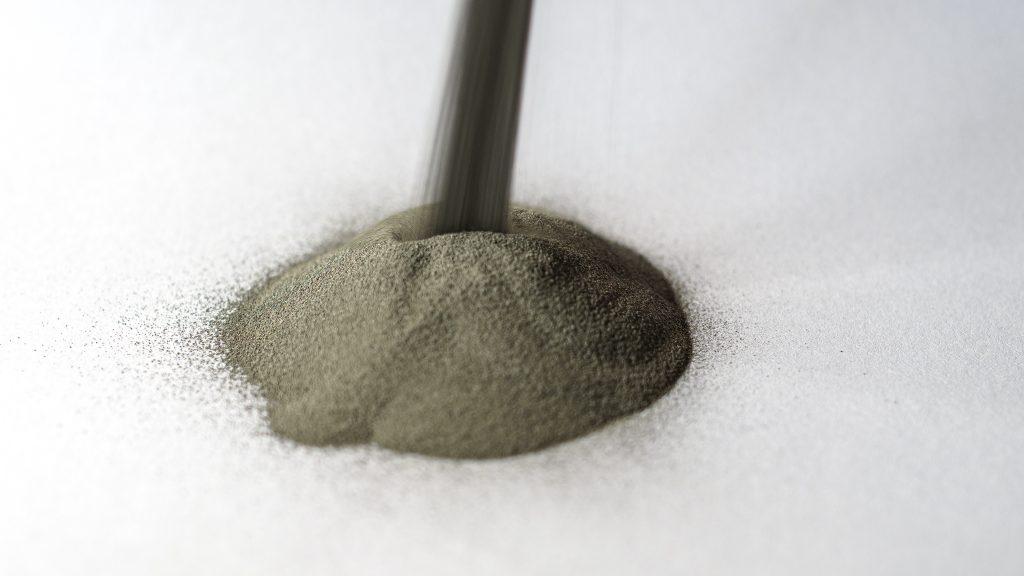Canadian mining and metals firm Rio Tinto has developed a new steel 3D printing powder using water atomization technology.
According to the company, it is widely believed that only high-cost gas and plasma atomizers are capable of producing powders suitable for industrial 3D printing. Developed and tested at the firm’s Rio Tinto Fer et Titane (RTFT) metallurgical complex in Quebec, the new steel powder has shown that water atomization is a more affordable route to powder production, all while delivering mechanical properties superior to those of conventionally manufactured metals.
RTFT is currently in the process of developing additional water atomized 3D printing powders to meet the needs of its industrial customers.
Stéphane Leblanc, Rio Tinto’s Iron and Titanium Managing Director, said, “This is a new generation of steel powders designed for 3D printing at RTFT’s metallurgical complex, where we have over 50 years of experience in making steel and iron powders.”

Water atomization for 3D printing
A water atomizer uses a high-pressure water spray to transform a liquid metal into micron-scale metal powder particles. Depending on the parameters of the water atomization process, the powder particles can vary greatly in shape, size, and composition, meaning a little fine-tuning can go a long way in producing a 3D printable metal.
RTFT is reportedly home to the largest water atomizer in North America, meaning the complex can produce greater volumes of powder than many competing plasma atomization facilities. It has operated in Quebec for around 70 years and is known for pioneering the process of removing iron from ilmenite.
Leblanc adds, “Our new additive manufacturing steel powder grade, produced with the largest water atomizer in North America, brings a very competitive raw material addition to the growing 3D market.”
While this may be Rio Tinto’s first attempt at developing its own 3D printing powder, the company has previously worked with metal additive manufacturing specialist Amaero to batch produce an existing high-performance aluminum-scandium alloy. The agreement saw Rio Tinto deliver alloy billets made of low carbon aluminum. Amaero uses the billets to develop ‘Amaero HOT Al’, the company’s High Operating Temperature 3D printing powder.
Four years in the making
The steel development project started around four years ago, when Rio Tinto’s Critical Minerals and Technology Centre partnered with several local universities in Canada. Once initial development was complete, Rio Tinto then partnered with Germany-based KSB, a leading manufacturer of pumps and valves, to test the performance of the powder for 3D printing applications.
The partners have already printed a set of full-scale parts using the steel, including a replacement part for a liquid iron casting system at the Quebec site. The print tests were used to certify the material for industrial applications. The replacement part measures around 300 x 300mm and is 70% lighter than the original cast part it is replacing. While the powder can be applied across many industries, the company has expressed plans to target the remote operation spare part sector as an initial goal.

With the development of its new 3D printing steel, Rio Tinto is the latest player in the metal additive manufacturing powder market. Kanthal, the heating technology brand of global engineering group Sandvik, recently invested in ultra-modern atomizing equipment to further the development of its own powder metallurgy operations. Together with Swedish metals research institute Swerim, Kanthal will use its €2M equipment to research metal powders for 3D printing and hot isostatic pressing applications.
Elsewhere, metal powder producer PyroGenesis recently announced that its new Additive Manufacturing NexGen powder production line was completed and operational. With an impressive throughput capability of 25kg/h, there are reportedly several “major top-tier” aerospace companies awaiting powders from the NexGen production line.
Subscribe to the 3D Printing Industry newsletter for the latest news in additive manufacturing. You can also stay connected by following us on Twitter and liking us on Facebook.
Looking for a career in additive manufacturing? Visit 3D Printing Jobs for a selection of roles in the industry.
Featured image shows Rio Tinto’s water atomized steel powder. Photo via Rio Tinto.


